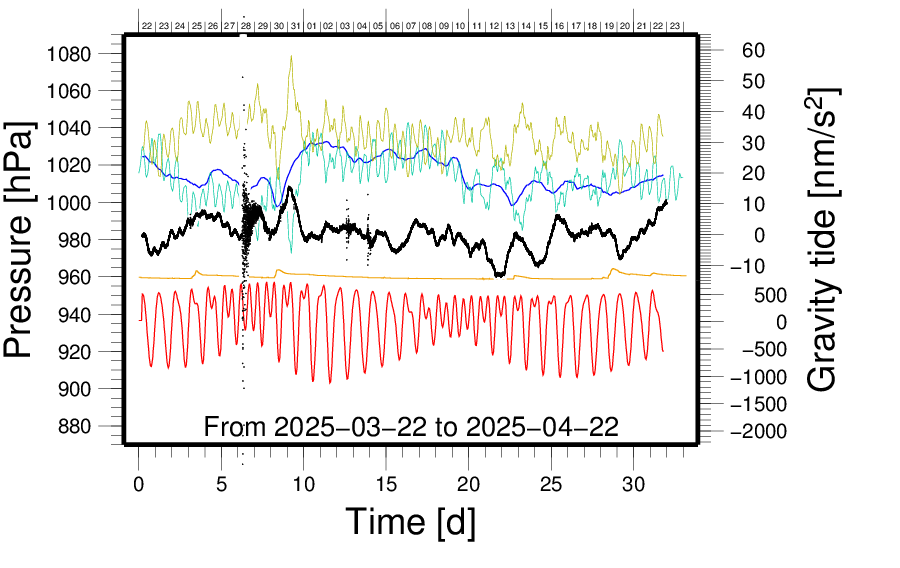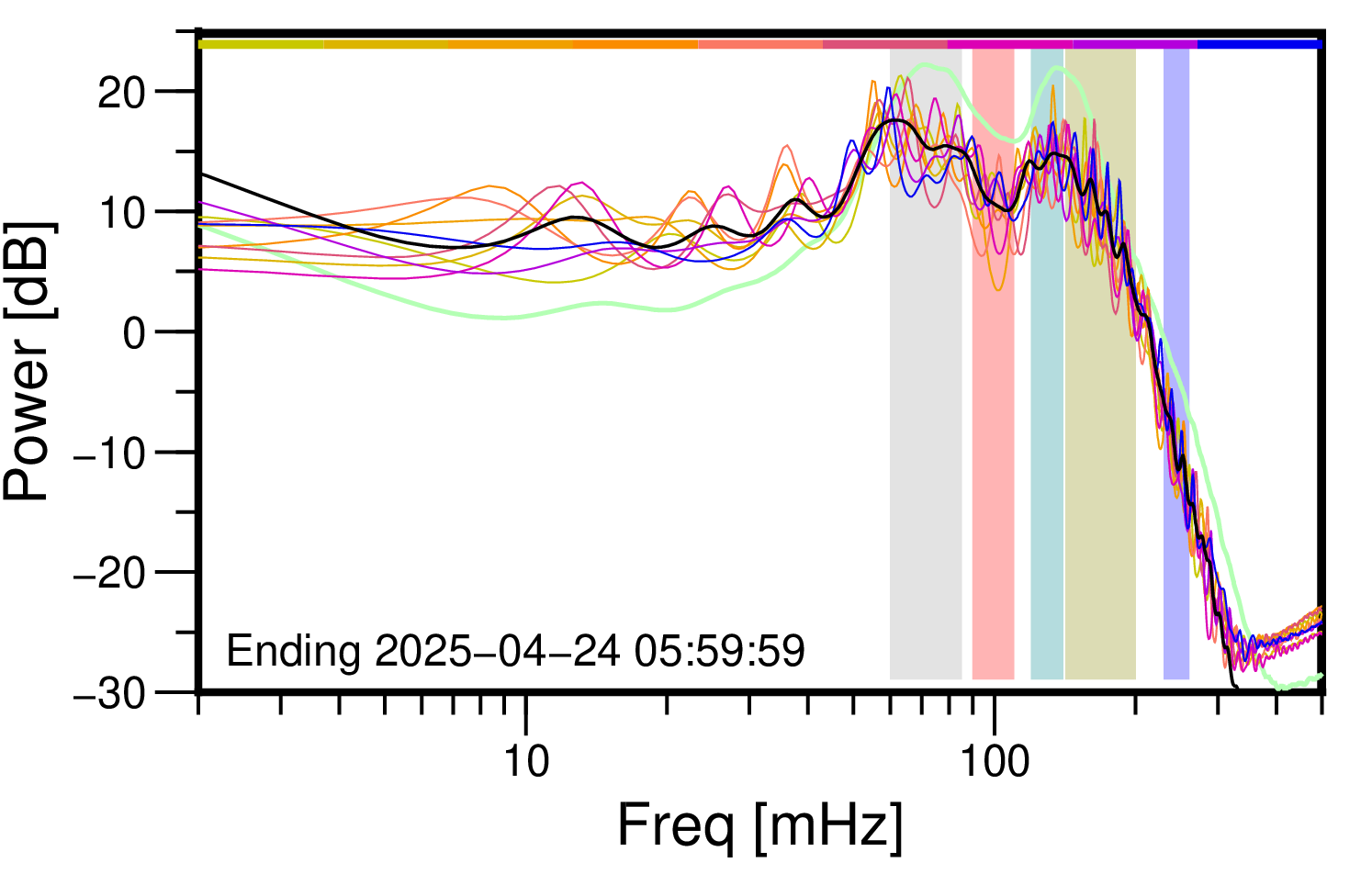
USGS most recent notification:
Our shortlist Free oscillation-band plots: The last 30 days Fiji Aug. 18, 2018 Kamchatka Jul. 30, 2025 |
Our barometer is defunct! Refer to OSO weather observations.
A typical noise level is ±20 nm/s2. If gravity is noisier than that, suspect storm on the Atlantic or European shelves.
We also offer 24-hours diagrams for yesterday and before.

The latest 31 days ( =>in big). ▉: predicted tide; ▉: inverse water level (IWL) at Onsala in hPa +1013, ▉: barometer (P) from 2024-06-01 replaced with OSO met station, 1 S/60s; ▉: bottom pressure proxy at Onsala; (the four at 1 smp/h). ▉: well water level in dm, ▉: tide+baro residual (at 1 smp/min; tide model revisions: 2014-05-01, 2014-05-18, 2015-02-05) P and IWL would follow each other if the response were static. |

Power spectrum (MEM) of micro-seismicity shows average during one hour (black), long-term average (light-green), and nine sliding 20-minute slices with ten minutes' report (from yellow, early, via red to purple, late). The pyjamas pattern aims to relate frequency to source area: ▉Greater North Atlantic, ▉Biscay, ▉Celtic Shelf, ▉Norwegian Sea, ▉North Sea. More on stormy weather and gravity. Visit spectrograms vs. time; the light-green curve is their baseline. (MEM = maximum entropy method) |